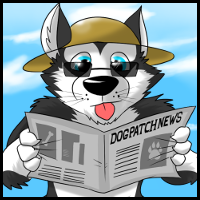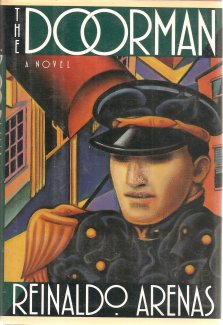The Cat, by Pat Gray – Book Review By Fred Patten.
by Patch O'Furr
Submitted by Fred Patten, Furry’s favorite historian and reviewer.
“Here is another of my reviews that was published ten years ago, edited in a manner that I didn’t like. This is my original review, so it’s a bit different from the printed version.”
 The Cat, by Pat Gray.
The Cat, by Pat Gray.
Sawtry, Cambridgeshire, UK, Dedalus Ltd., March 1997, trade paperback £6.99 (124 pages).
U.S. edition: Hopewell, NJ, The Ecco Press, November 1998, hardcover $19.00 (124 + 1 pages).
“A dark comedy with universal appeal, The Cat is the Animal Farm of the post-communist 1990s,” says the American dust-jacket blurb, while a Scottish review of the original British edition says that, “Gray’s reworking of the Animal Farm concept brings in a post-Thatcherite twist.” Animal Farm may live forever, but is The Cat really a modernization of Animal Farm for Britain of the 1990s?
“Chez Maupassant” is the typical British suburban home of the Professor and Mrs. Professor, their pet the Cat, and the presumably unnoticed Rat and Mouse. All live very comfortably, since the Professor is a gluttonous slob who leaves rich food everywhere.
“The cheesecake seemed to glow, luminous and fantastic, as the Professor skillfully slid it off its plate and cradled it in his large hand to prevent it breaking apart as his mouth closed in upon it. A look of childish pleasure crossed the Professor’s face, then a look of guilt, then he rammed the entire cheesecake into his mouth and began to eat.” (pg. 11)
The pampered Cat, the brash Rat, and the peevishly ineffectual Mouse (the latter two living under the house or within its walls) are best friends. Unfortunately, the Professor dies of a coronary three pages into the story (though leaving the fridge open). The animals are mildly distressed, but see no reason to fear a change in their lavish lifestyle — until Mrs. Professor moves to Brighton, leaving the Cat behind. Read the rest of this entry »



 The Wind in the Willows, by Kenneth Grahame. Frontispiece by Graham Robertson.
The Wind in the Willows, by Kenneth Grahame. Frontispiece by Graham Robertson. College Catastrophe, by Jan. Illustrated.
College Catastrophe, by Jan. Illustrated. The Doorman, by Reinaldo Arenas. Translated from the Spanish by Dolores M. Koch.
The Doorman, by Reinaldo Arenas. Translated from the Spanish by Dolores M. Koch.


 Mascot art, business, culture, and a Hall of Fame to celebrate it all.
Mascot art, business, culture, and a Hall of Fame to celebrate it all.

